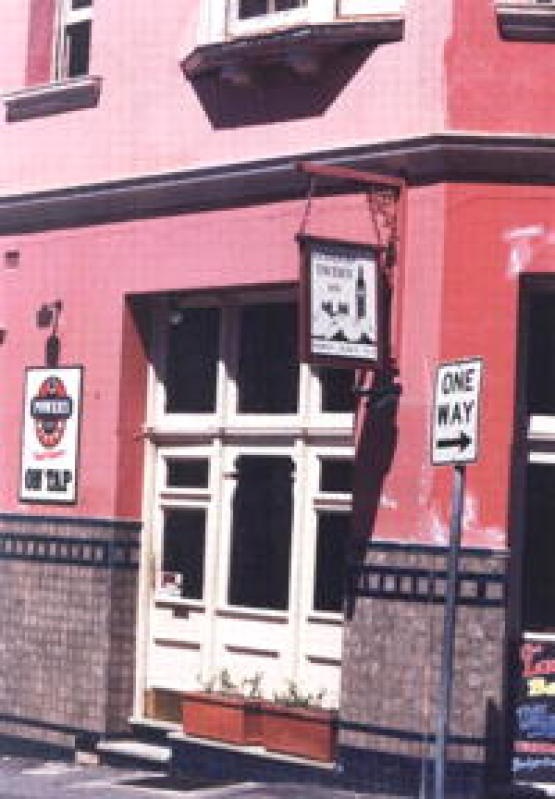Local history fast facts - L
A B C D E F G H I J K L M N O P Q R S T U V W X Y Z
LACROZIA VALE - The composite valley made up of creeks, largely Barcom Glen and Glenmore Brook, running down the slopes of Paddington and Woollahra emptying into Rushcutters Bay. The name is believed to have been given by Major Sir Thomas Mitchell when he lived at Craigend in Darlinghurst.
LADY BAY - Beach on South Head. The Bay has carried a number of names including 'Haul', Ladies 'Haul', and 'Lady Jane' - fish were often netted off it, lady swimmers hauled up the cliff on ropes with Lady Jane possibly having been an allusion to a principal character in the Gilbert & Sullivan opera, Patience.
LADY MARTINS BEACH - Felix Bay, Point Piper. Named in honour of the widow of Sir James Martin, Premier of N.S.W. in 1863, 1866-68 and 1870-72 and after whom Martin Place in the City was named. Lady Martin, who had the problem of accommodating 15 children, leased Woollahra House for some time after William Cooper left for England in 1888. The beach is zoned 'Local Open Space'.
For more information please see the Woollahra Libraries Digital Archive.
LAING GRANT - Of 20 acres extended from present day Camp Cove to Robertson Park, Watsons Bay given to Edward Laing on 28 May, 1793, passed through various hands until being subdivided in 1855.
LANDSDOWNE - Darling Point: see Canonbury.
LAYCOCK GRANT - Of 80 acres extended from the SW end of Shark Bay to the head of Parsley Bay given to Thomas Laycock on 25 February, 1793 - the first in the area. The grant together with the Cardell grant of 1795 formed the nucleus of what was to become the Vaucluse Estate.
LEURA - 24 Victoria Rd, Bellevue Hill. Built in 1891 for Mr Tom Knox, brother of Edward William Knox, adjoining 'Rona' and probably by the same architect. Of Federation Queen Anne style, the house was gutted by fire in January, 1909 and the wooden shingle roof replaced by terracotta shingles. In 1956, the house was purchased by Cranbrook School serving as 'Street House' for boarders named after the then President of the School Council, Sir Kenneth Street - it has since returned to the private sector. The site was once an Aboriginal camp alongside a natural spring.
LIGHTING - The principal roads in the Municipality were lit with gas from around 1865 and gradually extended over the Municipality and operated until 1922 when electric lighting was substituted for it - supply was from the City Council of Sydney.
LINDESAY - Carthona Avenue, Darling Point. Victorian Regency/Gothic house built for Campbell Drummond Riddell, 1836 (JAMES HUME/ED. HALLEN). Owners included Sir Thomas Mitchell, Sir Charles Nicholson and Hon. William Bradley. It is now owned by the National Trust.
LINDFIELD - Demolished house, 63 Darling Point Road, Darling Point. Built in 1888 for Mr W.H. Voss, early bungalow style, demolished 1968.
LOMBAH STREET, Rose Bay - now Manion Avenue Rose Bay.
LONDON TAVERN- Underwood Street, Paddington. Built ca. 1875 with some Italianate features - the tiling on ground level would have been a later embellishment.

London Tavern, 1990s. Woollahra Libraries Digital Archive, pf005289d.
LONGWOOD - Demolished house at 9 Thornton Street, Darling Point. Built in the late 1850s and purchased by George Thornton (after whom the street was named), Mayor of Sydney 1853 and first Chairman of the Woollahra Borough Council in 1860, a magistrate and MLC, in 1859. Thornton lived there until 1876. He then leased the property until its sale in the 1890s. The house was demolished in 1967 and replaced with high rise apartments.
LOOKOUT POST, SOUTH HEAD - see South Head Signal Station.
LOOKOUTS and Woollahra - One point of view concerning the origin of the name given to the Municipality and its association with Aboriginal food gathering needs.
LOUGH PLAYING FIELDS - Manning Road, Double Bay. The land on which the Lough Playing Fields now stands was once part of the Cooper family's Point Piper Estate. More information on Lough Playing Fields(PDF, 81KB)
LYNE PARK - Rose Bay. Reclaimed from tidal sand flats in 1902 to form a 14 acre (5.6 ha.) reserve named in honour of Sir William Lyne, the N.S.W. Premier from 1899 to 1901. In 1905, 8 acres (3.2 ha.) at the east end was revoked for use as a recreation oval for the Navy. In 1938, a flying boat base was established on this ground - the first flight to England leaving 5 July , 1938 (Short 'Empire' class, Cooee, VH-ABF). The last commercial flight was on 10 September, 1974 to Lord Howe Island. The base was subsequently demolished and returned to parkland.
For more information please see the Woollahra Libraries Digital Archive.
LYNE PARK SERVICE WHARF - The service wharf in Lyne Park (now ferry wharf) was the site of a 'metal wharf' where 'Blue Funnel Line' coastal ships and others unloaded blue metal into an above-ground hopper.